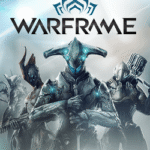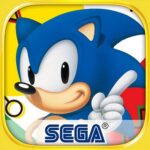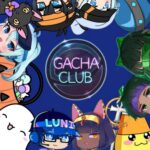
Geometry Dash
All trademarks belong to their respective owners.Popular Now
 Warframe
Warframe
 Call of Duty
Call of Duty
 Sonic the Hedgehog™ Classic
Sonic the Hedgehog™ Classic
 Genshin Impact
Genshin Impact
 Auto X Drift Racing 3
Auto X Drift Racing 3
 Counter-Strike 2
Counter-Strike 2
 Gacha Club
Gacha Club
 Toca Boca World
Toca Boca World
 Black Myth: Wukong
Black Myth: Wukong
 R.E.P.O
R.E.P.O
The Aesthetic of Agony: Geometry Dash’s Visual Evolution and Stylistic Impact
Beyond its pulsating beats and punishing difficulty, Geometry Dash is instantly recognizable by its distinctive visual style. A vibrant tapestry of neon colors, sharp geometric forms, and dynamic particle effects, the game’s aesthetic is far more than just eye candy; it’s an integral part of the gameplay experience. This aesthetic of agony—where beauty meets brutal challenge—has evolved significantly over its lifespan, influencing subsequent rhythm-platformers and cementing Geometry Dash’s place not just as a game, but as a unique exercise in audio-visual design and stylistic impact.
The Core Elements: Geometry and Color
From its very first release, Geometry Dash established a foundational visual language that remains iconic.
- Geometric Simplicity: The game’s core design revolves around simple, hard-edged geometric shapes: squares, triangles (spikes), circles (orbs), and straight lines (platforms). This simplicity provides exceptional readability even at high speeds, allowing players to quickly discern obstacles and safe paths. It’s a clean, functional aesthetic that prioritizes clarity.
- High-Contrast Color Schemes: Geometry Dash levels frequently employ high-contrast, often neon, color palettes. Bright, glowing elements stand out against darker backgrounds, making critical interactive objects immediately visible. This visual clarity is paramount for a game that demands split-second reactions.
- Icon Customization: Players can extensively customize their main icon, ship, ball, and other forms with various shapes and colors. This allows for personal expression within the game’s defined aesthetic, giving players a sense of ownership over their digital avatar and contributing to the game’s unique visual identity.
Visual Feedback and Gameplay Integration
The visual design is deeply intertwined with the gameplay mechanics, providing crucial feedback and enhancing immersion.
- Synchronized Visuals: A hallmark of well-designed Geometry Dash levels is the perfect synchronization of visual effects with the music’s beat. Lights flash, backgrounds change, and objects move in time with the rhythm, transforming the gameplay into a captivating audio-visual performance. This creates a powerful sensory loop that enhances both challenge and immersion.
- Dynamic Backgrounds and Effects: Levels are rarely static. Moving backgrounds, swirling particles, flashing lights, and dramatic camera movements are used to create a sense of speed, tension, and epic scale. These dynamic elements not only look impressive but also contribute to the overall difficulty by adding visual complexity.
- Clear Interaction Cues: Orbs glow when they can be activated, pads bounce with clear visual indicators, and portals have distinct appearances to signify game mode changes. This consistent and clear visual feedback is essential for players to understand what action is required in their fraction of a second to react.
- The “Death” Animation: Even failure is visually impactful. The player’s icon explodes into a burst of colorful particles, providing immediate and unambiguous feedback. This quick, visually striking death animation prevents frustration from lingering and encourages instant restarts.
Evolution and Stylistic Innovation
Over its decade-plus lifespan, Geometry Dash’s visual style has not remained static. It has continuously evolved, pushed by both the developer (RobTop) and the incredibly creative user-generated content (UGC) community.
- New Object Packs and Effects: Updates regularly introduce new object sets, block designs, particle effects, and background options, providing creators with an expanded palette for their designs. This continuous injection of new visual tools keeps the aesthetic fresh and allows for greater complexity.
- Community-Driven Visual Trends: The UGC community itself is a powerhouse of visual innovation. Creators constantly experiment with new ways to combine objects, use color triggers, and manipulate camera effects to create never-before-seen visual spectacles. This iterative process within the community pushes the boundaries of the game’s graphical capabilities, leading to stunning and often mind-bending levels that redefine what Geometry Dash can look like.
- Influence on Other Games: Geometry Dash’s success in blending simple geometric visuals with complex rhythmic gameplay and dazzling effects has influenced numerous other independent rhythm-platformers and mobile games, proving the power of its unique aesthetic.
Geometry Dash’s visual design is a masterclass in functional aesthetics. It’s not just about looking good; it’s about enhancing readability, providing critical feedback, and creating a deeply immersive experience that’s perfectly synchronized with its musical core. The “aesthetic of agony” is precisely what makes conquering its brutal challenges so visually and emotionally rewarding.
What’s your favorite visual effect or design element in Geometry Dash, and why?
Rating
PROS
- Geometry Dash has a lot of replayability
- Geometry Dash is very addictive
- Geometry Dash is challenging and fun
CONS
- Geometry Dash has a lot of replayability
- Geometry Dash is very addictive
- Geometry Dash is challenging and fun
- Geometry Dash is very hard, so it is not for everyone
